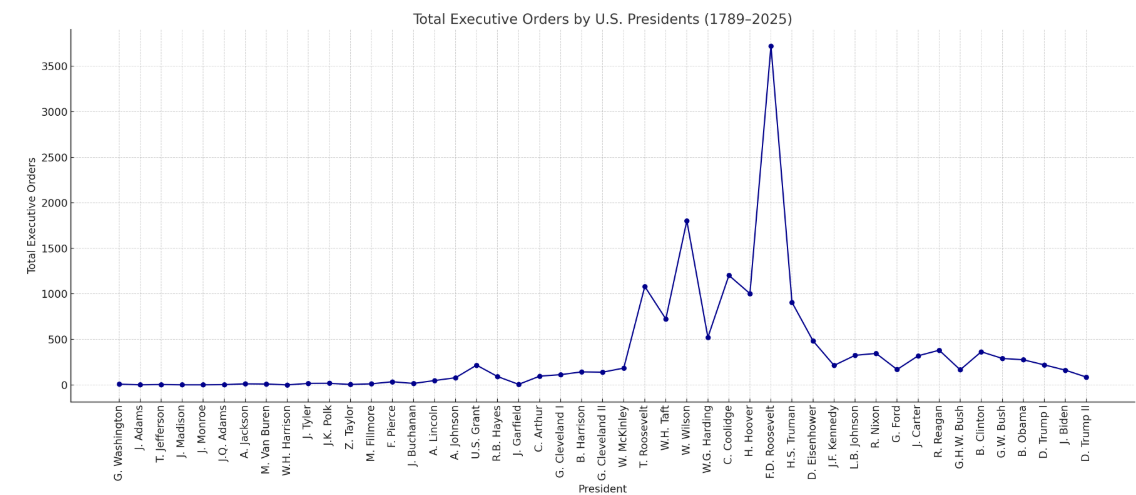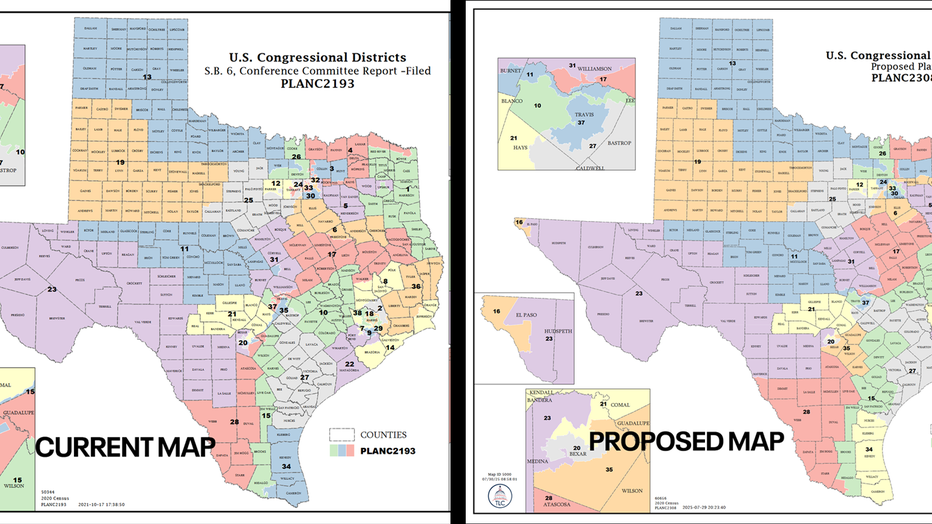American presidents have used Executive Orders to pass certain pieces of their agendas since the days of George Washington (he signed 8) and the practice has continued into the modern era with each of the last four presidents signing 40-50 Executive Orders per year. And while media coverage may suggest that the use of Executive Orders has never been higher, that is far from the truth. In fact, Franklin Delano Roosevelt signed more than 3,700 Executive Orders during his four terms in office – that’s more than 300 per year! And only one American president logged zero Executive Orders. William Henry Harrison, our 9th president, did not sign a single one in his 31-day term that was cut short by his sudden death in 1841. Our earliest presidents (Washington, Adams, Monroe, Quincy Adams) signed just 18 in total before Andrew Jackson slightly expanded Executive Order use with 12 in his two terms in office. In other words, Executive Orders may seem to get a lot of attention in the modern political era, but the practice is as old as the presidency itself.

What may be more true today than in the past is that presidential Executive Orders are having more and more impact on partners in federal agencies across the government. Without a uniform federal process for tracking and responding to Executive Orders, agencies are improvising and using tools they already know to manage them. Some agencies are using simple spreadsheets, some are experimenting with SharePoint folders, others are simply logging Executive Order impact and planning responses through email. Some are doing a combination of all three of these approaches – all with mixed success. As agencies work to understand how their missions may be impacted by Executive Orders, many federal leaders are looking to technology vendors like Leidos for help. While the techniques mentioned above can offer some relief and organization, there are many limitations to these approaches. Searching through a combination of email traffic, shared folders, and manually updated spreadsheets can be incredibly time-consuming and can lead to unfortunate mistakes. This patchwork approach can come with confidentiality/privacy concerns as well as permissions and access headaches that can arise when using multiple, non-optimal systems to accomplish a specific objective. While using systems like email and Excel do come with the benefit of familiarity to most users, users sacrifice strategic-level visibility with no dashboards or reporting tools available to federal leaders.
We have good news. If your office or agency is using IQ, you already own a system that can be configured to track Executive Orders and plan any response or change in business processes at your organization. We have recently completed work with an agency to build custom workflows and dashboards, all within IQ, that streamline Executive Order management and we are now happy to make that new development available to all federal customers. Using IQ to manage Executive Orders solves many of the problems associated with other approaches; simplifying searches, offering the convenience of using a single, secure platform, providing internal updates and notifications, and providing high-level reporting capabilities for staff of all levels.
If you are not yet an IQ user and are considering investing in a CRM platform for your office, we encourage you to consider this article through two lenses. First, IQ offers this new functionality to optimize how your office or agency tracks and works with Executive Orders. We believe this is a compelling value-add that other CRM vendors cannot match. Secondly, when you select IQ, you are choosing to partner with Leidos, a Fortune 500® technology and innovation company staffed by some of the brightest technologists in the world. Other vendors simply lack the resources and talent to adapt to emerging needs from their customers like the one we identified around Executive Orders. We have the flexibility, experience, and foresight to grow our product and change it proactively based on future needs as well as being responsive to problems our customers face today. When you choose Leidos and IQ you’re not only choosing a partner that can improve your work now, but you’re investing in your agency’s future too.
Hiring an experienced team to staff your office is smart. Giving them the best tools to do the job is smarter.











